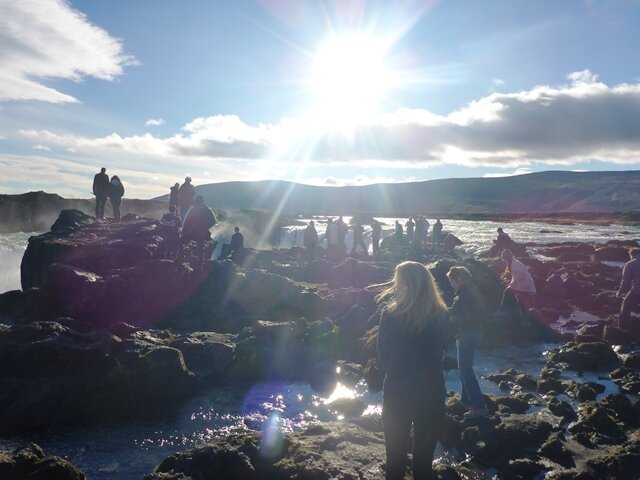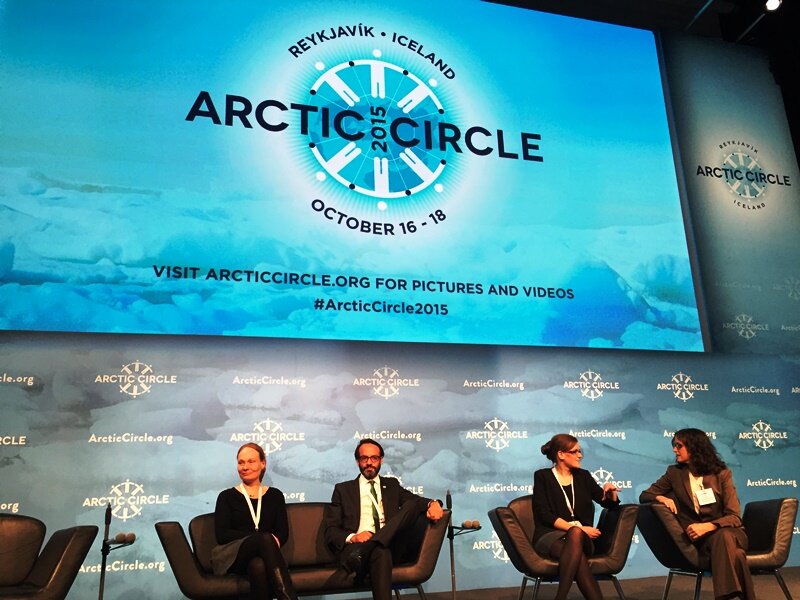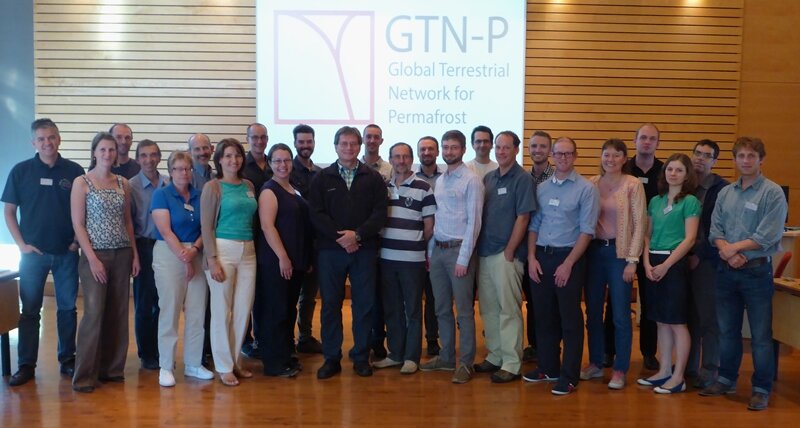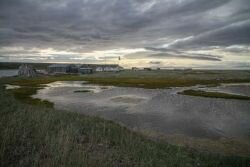Herschel Island 2014: Defying the nature
As soon as we started our departure to Herschel Island, the weather started to dictate our work. The fog on the island caused few delays of our flights so we only managed one flight per day, with some of us arriving a day and a half late.
The weather soon started to get stormy with a rain and winds up to 60 km/h. The temperatures dropped to 4°C and we were able to watch the snowflakes mixed with the rain hitting the window of our warm trapper's house on Herschel Island base. However, this weather was still suitable for repacking of our freight, testing the instruments and preparing them for the transport to the sites.
The strong wind and a bad visibility didn't allow the helicopter flights, which were planned for the first days of expedition. So we had to postpone the four days of coast survey of Yukon Coast. Nevertheless, despite the stormy weather, there were few hours of calmer weather with sun rays and brief views on snowed British Mountains. We used these moments for the first visits of our sites.
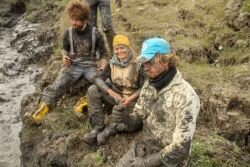 (Photo: Jaroš Obu) After working in the muddy slump DWe checked the permafrost temperature and moisture loggers on polygonal field of a drained lake. We immediately spotted two broken wooden poles to which our loggers were attached. The presence of muskox fur revealed that poles had previously served as their scratching posts. But the loggers were still in a good shape so we only had to bring new poles.
(Photo: Jaroš Obu) After working in the muddy slump DWe checked the permafrost temperature and moisture loggers on polygonal field of a drained lake. We immediately spotted two broken wooden poles to which our loggers were attached. The presence of muskox fur revealed that poles had previously served as their scratching posts. But the loggers were still in a good shape so we only had to bring new poles.
Meanwhile Isla and Clara started with their vegetation surveys on Collinson Head. Once the rain and winds died down a bit, measuring the plants in the 12 long-term plots in two of the island's vegetation zones became feasible, but rather chilly work when it is 4°C outside.
Clara and Isla like to bring lots of snacks for their long days in the field and they try to run around the tundra and jump up and down every half an hour or so to keep warm. After finishing most of their work for the day they hiked out to the top of the mud cliffs to warm up and look for whales. After sitting for quite a while, they saw a bowhead (Greenland) whale swimming in the water.
It took several breaths, letting out puffs of water vapour into the air, rolled on its back showing its fins and tail, and even sticking its head out of the water, perhaps looking in their direction. Then it took one last breath and took a deep dive and was gone.
We were able to do our first trips with boat as well. Gavin and Angus managed to deploy their sea current, tide and wave measuring instruments in Workboat Passage and on the East side of the island. After the six days on the island, there was a suitable day for the installation of weather station and fume channel on the Slump D.
We successfully installed construction and instrument for weather station in two hours. After four hours of digging in a mud, we placed the flume channel in the outlet gully of the slump. We were just finishing the installation when a mudflow came flowing down the gully, just like chocolate fountain. Luckily the mud displaced the channel only for few metres and didn't damage it much.
Despite the weather, animals and unexpected events, we have continued with our research. The helicopter has been rescheduled for the third week of expedition and we easily repaired the logger poles. As we observed, the mudflows in Slump D are very frequent this year so we decided to move our flume measurements to the new watershed that we are beginning to monitor this year as a part of a long-term programme on permafrost in transition across Canada (The ADAPT programme).
Now we are waiting for some more sunny days and are optimistically beginning the second week of the expedition on the Herschel Island. Though, we might have to wait bit longer for the good weather as a storm with rain and wind arrived today leaving time to finish this blog post!
Written by Jaroš and Isla


